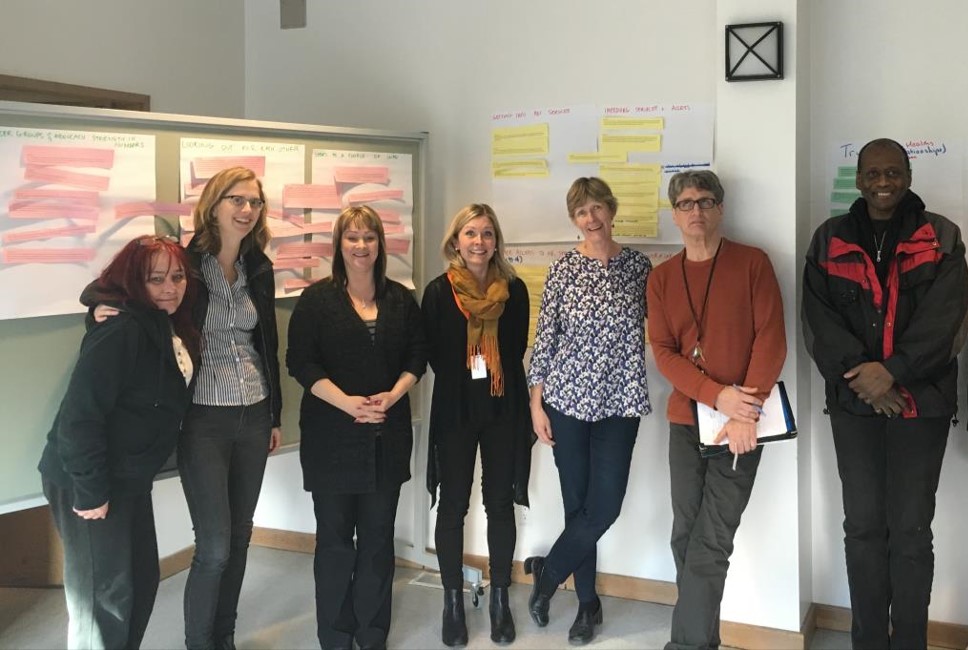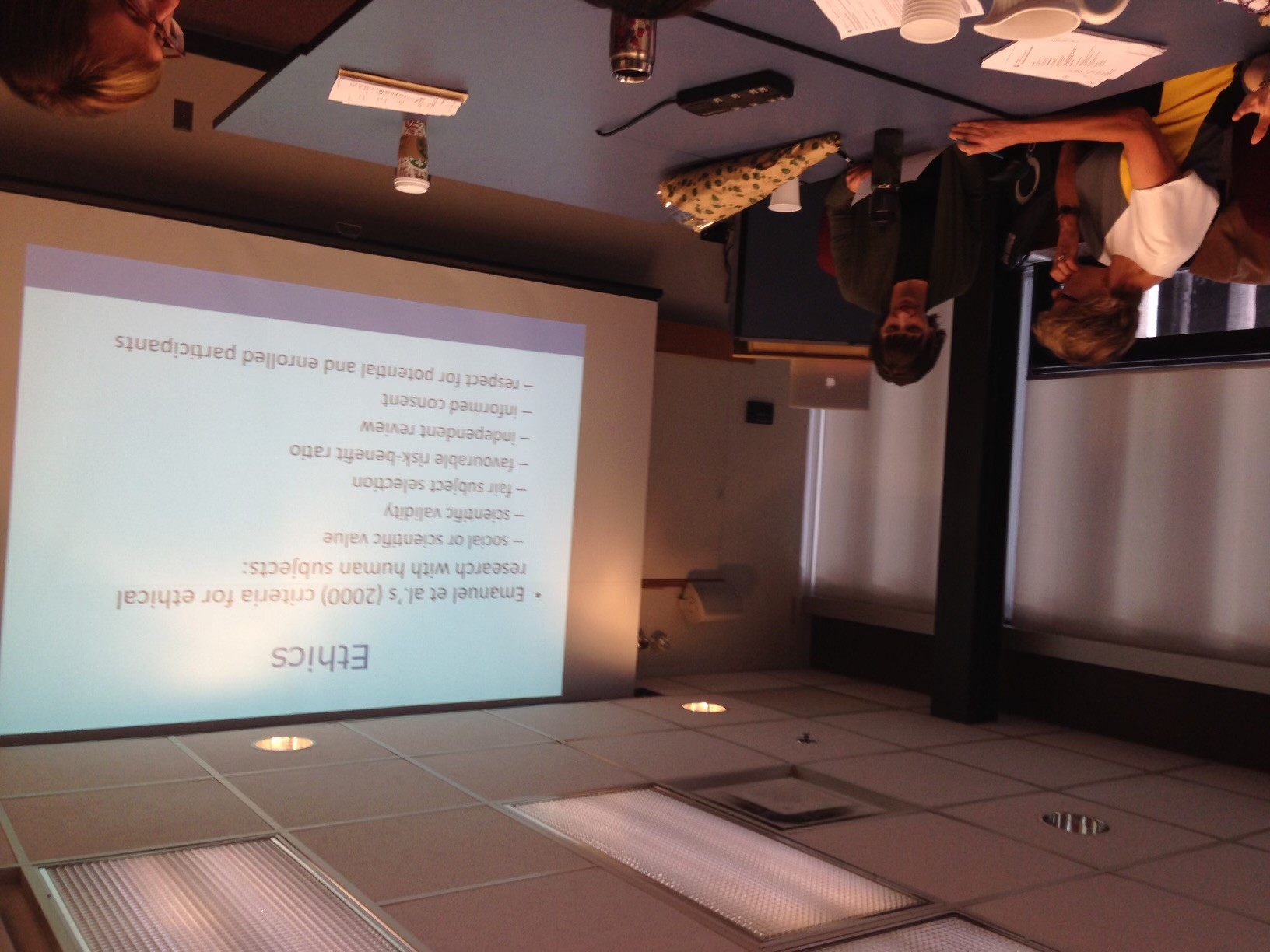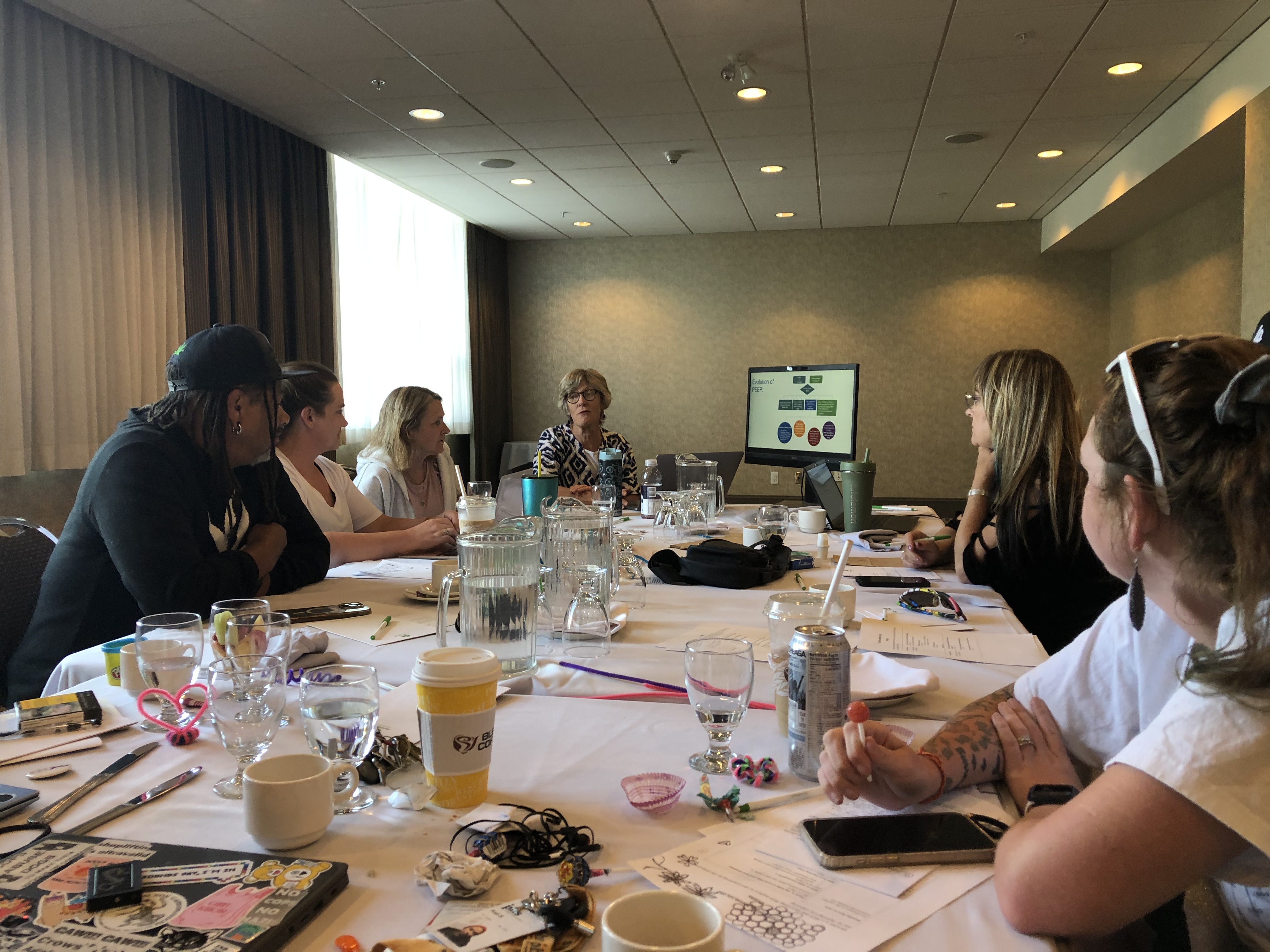Dr. Jane Buxton was one of 14 people appointed to the Order of British Columbia on August 7. The province's highest honour recognizes those who have served the province with distinction and excellence in a field that benefits people in B.C. and beyond.
Jane is a physician epidemiologist and the former medical lead for harm reduction at the BC Centre for Disease Control. Despite being semi-retired, Jane is still active in research and harm reduction efforts at both BCCDC and the University of British Columbia (UBC), where she's a professor emeritus in the School of Population and Public Health.
"You get a phone call and somebody tells you you've been nominated, it's been approved and you'll be appointed! It's fabulous to actually get the recognition," says Jane.
Jane is quick to point out that the honour comes against a backdrop of the ongoing tragic and preventable loss of life, due to the unregulated toxic drug supply. Still, she says it's encouraging to see the work of people dedicated to harm reduction and public health being celebrated.
Those in the health care field appointed to the Order of B.C. this year include Evanna Brennan and Susan Giles, two outreach nurses who have worked to support people who use drugs in Vancouver's Downtown Eastside for 40 years.
"It really highlights that there's recognition of harm reduction and peer engagement at the provincial level," says Buxton.
Jane sees recent developments in harm reduction, such as the decriminalization of small amounts of controlled substances, as an opportunity to reduce stigma and encourage people to reach out for help.
“It's a start," says Jane. “It's important, but it's not the answer."
“We also have to remember that not everyone wants to stop using substances immediately," she says, citing what she calls the harm reduction mantra.
“Treatment's not perfect for everyone. We need to meet people where they're at."
Going forward, Jane wants to see wider availability of safer supply and opioid agonist treatment, and more equity throughout the province when it comes to accessing the range of available harm reduction resources, including overdose prevention sites and supervised consumption sites.
She says a lot of the discrimination against people who use substances comes from a lack of knowledge and understanding of substance use disorder and the trauma that’s often behind it.
"We need to be able to discuss what can be done and change how we talk about people who use substances. The language that's used is really important. We need to show compassion and empathy."
Jane says people with lived and living experience of substance use and their loved ones should continue to lead the way forward.
“I’m so grateful that people are continuing to fly the flag of harm reduction and peer engagement. It’s not an easy area to be in," she says.
“Hats off to colleagues who continue, despite the trauma that comes along with working in the area. Especially folks with lived experience who never get a break.”
 Dr. Jane Buxton (third from right) stands with members of the Peer Engagement and Evaluation Project (PEEP), an intitiative that aims to ensure everyone in B.C. has access to harm reduction services.
Dr. Jane Buxton (third from right) stands with members of the Peer Engagement and Evaluation Project (PEEP), an intitiative that aims to ensure everyone in B.C. has access to harm reduction services.
Buxton's BCCDC colleagues say they were thrilled to hear about her appointment.
“Jane was a major influence on why I chose to specialize in public health,” says Dr. Jason Wong, Chief Medical Officer for BCCDC, who did an elective with Jane when he was a third year medical student.
"She taught me about the work of public health practitioners in promoting health and wellness, but also the importance of practicing with compassion and listening to the people who are most impacted.”
“Jane is an accomplished scholar and leader in harm reduction, but it is Jane’s love and enthusiasm for teaching the next generation that is one of the greatest inspirations to me," says Wong.
Dr. Alexis Crabtree, a Public Health Physician for Substance Use and Harm Reduction who was also mentored by Jane says Jane "changed the way public health cares for people who use drugs in B.C."

“By working with people who use drugs as colleagues and friends, Jane made space for their more meaningful involvement in decision-making at the BC Centre for Disease Control and beyond," says Crabtree. "Her leadership in developing the Take-Home Naloxone program has saved countless lives.”
Pictured right: Dr. Jane Buxton (left) attended Dr. Alexis Crabtree's thesis defence.
Sierra Williams, Public Health Manager for Harm Reduction and Substance Use Services, says it’s difficult to summarize all of Jane’s contributions over the years, and Jane’s leadership and mentorship of a generation of public health experts will leave a lasting legacy.
“Jane has undoubtedly shaped the landscape of harm reduction and response to the unregulated drug poisoning emergency,” Williams says.
“It was a privilege to be mentored by Jane. Her commitment to centering the voices of people with lived and living experience, as well as her passion for supporting and mentoring others has been, and continues to be an inspiration to so many.”
Buxton recalls starting out at the BCCDC in 2003 when harm reduction was shifting from a needle exchange to a needle distribution model, and how there’s been a sea change to focus on providing better access to safer supply and a wide range of health and social supports to those in need.
“We have come so far since I started,” she says. “Although we’ve done a lot to try and help people, the drug supply has gotten so toxic that all of the things we’ve done just aren’t enough.”
Buxton wants to see a more creative and consolidated approach when it comes to helping people who use substances. She’s been directly involved in initiatives that have saved thousands of lives, such as the Take Home Naloxone program that launched in 2012 and ramped up in 2016, when fentanyl entered the drug supply.
Naloxone is a medication that reverses opioid poisonings (overdoses), and it’s much more accessible to people who use substances and their friends and family now, with over 1.9 million kits going out to distribution sites, community groups and pharmacies throughout the province since the program started.
Buxton says the Take Home Naloxone Program got started when members of the Vancouver Area Network of Drug Users (VANDU) came to her and asked why the medication wasn’t readily available.
Before starting the naloxone program, Buxton also helped create a committee known as the BC Drug Overdose and Alert Partnership (DOAP). It brings together people who use substances, paramedics, healthcare, drug and poison control, coroners and law enforcement, to identify and share timely information on emerging substance issues.
She says harm reduction work in B.C. is driven by a team of passionate, committed individuals at BCCDC, the regional health authorities and especially people in the community with lived and living experience.
“Any initiative or achievement … it’s not just me.”
 Jane Buxton, centre, says people with lived and living experience are the real experts in harm reduction.
Jane Buxton, centre, says people with lived and living experience are the real experts in harm reduction.

